Possible Loan
“Empowering Your Financial Future with Possible Loan“
Possible Finance, commonly referred to as Possible Loan, is a fintech company that offers short-term, small-dollar loans through a mobile app. The company aims to provide an alternative to traditional payday loans by offering loans that are more affordable and have a repayment structure designed to help customers build credit. Possible Loan‘s approach is to report repayments to major credit bureaus, which can help borrowers improve their credit scores over time if they make their payments on time. The company emphasizes a quick application process, fast funding, and a more flexible repayment schedule compared to conventional payday lenders.
Ready to unlock your financial potential? Discover your ideal loan solution now! Visit personalloansonlineinstantapproval.com for instant approval and take the first step towards achieving your financial goals today!
Understanding Possible Loan Options for Small Business Financing
Title: Possible Loan Options for Small Business Financing
In the realm of small business financing, understanding the myriad of loan options available can be a daunting task. However, with a friendly guide through the landscape of potential funding sources, entrepreneurs can make informed decisions that align with their business goals and financial needs. The journey through the various loan possibilities begins with a fundamental comprehension of the most common types of financing and progresses to the nuances that differentiate them.
Traditional bank loans often serve as the cornerstone of small business financing. These loans are typically offered by large commercial banks and are characterized by their more stringent eligibility criteria, which may include a thorough review of the business’s credit history, financial statements, and business plan. Despite the rigorous application process, the appeal of traditional bank loans lies in their generally lower interest rates and longer repayment terms, making them a potentially cost-effective option for businesses with a solid financial foundation.
Transitioning from conventional bank loans, Small Business Administration (SBA) loans emerge as a viable alternative. The SBA partially guarantees these loans, reducing the risk for lenders and often enabling more favorable terms for borrowers. SBA loans are particularly beneficial for small businesses that may not qualify for traditional bank loans due to a lack of collateral or a shorter credit history. The SBA’s guarantee can provide the necessary assurance for lenders to extend credit under conditions that might otherwise be unattainable.
Another financing option that has gained traction in recent years is online lending. Online lenders offer a variety of loan products, including term loans, lines of credit, and merchant cash advances. The allure of online lending lies in its accessibility and speed; the application process is typically streamlined, and decisions are made rapidly, often within a matter of days. This can be especially advantageous for small businesses that require quick access to capital to seize timely opportunities or manage unexpected expenses.
Peer-to-peer (P2P) lending is an innovative form of financing that connects borrowers directly with individual investors through an online platform. P2P lending bypasses traditional financial institutions, potentially offering more competitive rates and a more personalized borrowing experience. Small businesses may find P2P loans attractive due to their flexible terms and the opportunity to present their business case directly to potential investors.
Microloans present yet another option, particularly for smaller businesses or startups that require modest amounts of capital. These loans are often provided by non-profit organizations or specialized microfinance institutions and are designed to support underserved entrepreneurs who may not have access to traditional banking services. Microloans can be instrumental in helping small businesses get off the ground or fund specific projects without the burden of a large debt obligation.
Invoice financing, also known as accounts receivable financing, allows businesses to borrow against the value of their outstanding invoices. This can provide a quick influx of cash, improving cash flow and enabling businesses to continue operations without interruption while waiting for customers to pay. This type of financing is particularly suitable for businesses with long invoice cycles or those that frequently experience delays in payment.
In conclusion, the landscape of small business financing is rich with possibilities, each with its own set of advantages and considerations. Whether it’s the traditional route of bank loans, the government-backed assurance of SBA loans, the speed of online lending, the direct connection of P2P lending, the targeted assistance of microloans, or the cash flow solution of invoice financing, small businesses have a plethora of options to explore. By carefully assessing their unique needs and circumstances, entrepreneurs can navigate these possibilities and secure the funding that best supports their business aspirations.
The Pros and Cons of Securing a Possible Loan for Home Improvements
Title: Possible Loan
When considering home improvements, homeowners often face the challenge of financing their renovation projects. A Possible Loan, such as a home equity loan or a personal loan, can provide the necessary funds to transform a living space. However, securing a loan for home improvements is a decision that should be weighed carefully, with a clear understanding of the advantages and disadvantages.
One of the primary benefits of obtaining a loan for home improvements is the immediate access to capital. This allows homeowners to undertake necessary repairs or desired upgrades without delay, potentially increasing the value of their property. For instance, kitchen remodels and bathroom renovations are known to offer substantial returns on investment when it comes time to sell the home. Moreover, the comfort and enjoyment derived from a newly renovated space can significantly enhance the quality of life for the occupants.
Furthermore, certain types of loans, such as home equity loans, come with the advantage of lower interest rates compared to other forms of credit like credit cards. This is because they are secured by the equity in the homeowner’s property, reducing the risk for the lender. Additionally, the interest paid on a home equity loan used for home improvements may be tax-deductible, providing a potential financial benefit come tax season.
On the other hand, securing a loan for home improvements is not without its drawbacks. The most significant concern is the risk of over-borrowing. Homeowners must be cautious not to take on more debt than they can afford to repay, as defaulting on a loan could lead to serious financial consequences, including foreclosure in the case of a home equity loan. It is crucial to have a realistic budget for the renovation project and to borrow only what is necessary.
Another consideration is the length of time it takes to repay the loan. Home improvement loans are typically repaid over several years, which means that the borrower will be committed to monthly payments for an extended period. This long-term financial obligation requires careful planning and budgeting to ensure that it does not become a burden.
Additionally, the process of obtaining a loan can be time-consuming and may involve various fees, such as origination fees, appraisal fees, and closing costs. These additional expenses can add up, increasing the overall cost of the renovation project. Homeowners must factor in these costs when determining the affordability of a loan.
In conclusion, securing a Possible Loan for home improvements can be a wise investment that enhances the value and enjoyment of a property. The immediate access to funds and potential tax benefits are attractive incentives. However, the risks associated with borrowing, including the long-term financial commitment and additional costs, must be carefully considered. Homeowners should thoroughly evaluate their financial situation, the terms of the loan, and the projected return on investment of the renovation before proceeding. By doing so, they can make an informed decision that balances the desire to improve their home with the need for financial prudence.
Navigating Possible Loan Solutions for Debt Consolidation
Title: Navigating Possible Loan Solutions for Debt Consolidation
In the realm of personal finance, debt consolidation emerges as a strategic approach to managing multiple debts. This method involves combining various debts into a single loan with the aim of securing a lower interest rate or a more manageable monthly payment. As individuals seek to streamline their financial obligations, understanding the nuances of Possible Loan solutions for debt consolidation becomes paramount.
The journey toward effective debt consolidation begins with a thorough assessment of one’s financial situation. It is essential to evaluate the total amount of debt, the interest rates applicable to each debt, and the monthly payments required. Armed with this information, individuals can explore the various loan options available to them. Among these options, personal loans, home equity loans, and balance transfer credit cards are the most prevalent.
Personal loans are often unsecured, meaning they do not require collateral, which can be advantageous for borrowers without significant assets. These loans typically offer fixed interest rates and a set repayment period, providing a clear path to debt freedom. However, the interest rates for personal loans are contingent upon the borrower’s creditworthiness, which underscores the importance of maintaining a good credit score.
Conversely, home equity loans present an alternative for homeowners. By leveraging the equity in their property, borrowers can obtain a secured loan with a potentially lower interest rate compared to unsecured personal loans. This option can be particularly attractive due to the tax-deductible nature of the interest paid on home equity loans. Nevertheless, it is crucial to recognize the risk involved; failure to repay the loan could result in the loss of one’s home.
For those with high-interest credit card debt, balance transfer credit cards offer a temporary reprieve. These cards often come with introductory periods featuring low or zero percent interest rates, allowing borrowers to pay down their principal balance more rapidly. However, it is imperative to be mindful of the balance transfer fees and the standard interest rate that will apply once the introductory period concludes.
Moreover, debt consolidation loans are not a one-size-fits-all solution. The effectiveness of a loan for debt consolidation hinges on the borrower’s discipline and commitment to a financial plan. It is not merely about shifting debt from multiple creditors to a single lender; it is about adopting a more strategic approach to debt repayment. Borrowers must avoid accruing new debt and focus on paying off the consolidated loan.
In addition to the aforementioned loan options, borrowers may also consider consulting with a credit counselor or a financial advisor. These professionals can provide personalized advice and help individuals navigate the complexities of debt consolidation. They can assist in crafting a budget, negotiating with creditors, and developing a comprehensive plan to address financial challenges.
Ultimately, the path to consolidating debt is multifaceted and requires careful consideration of the potential benefits and drawbacks of each loan solution. By taking a proactive stance and seeking the most suitable loan option, individuals can simplify their financial obligations, reduce their overall interest payments, and move closer to achieving financial stability. As with any financial decision, it is advisable to conduct extensive research and possibly seek professional guidance to ensure that the chosen debt consolidation strategy aligns with one’s long-term financial goals.
Q&A
1. What is a Possible Loan?
A Possible Loan refers to a small, short-term loan offered by Possible Finance, which is designed to be more accessible to individuals with poor or no credit history. These loans are typically for small amounts and are intended to be repaid in installments over a short period.
2. How does a Possible Loan work?
A Possible Loan works by allowing borrowers to apply for a small loan, usually up to $500, through a mobile app. If approved, the funds are deposited into the borrower’s bank account. Borrowers then repay the loan in installments over a set period, often with the option to reschedule payments if needed. On-time payments can help borrowers build credit history.
3. What are the requirements to get a Possible Loan?
The requirements for a Possible Loan typically include being at least 18 years old, having a regular source of income, possessing a valid form of identification, and having a checking account in good standing. Credit scores are considered but are not the sole factor in determining eligibility.Possible Loan is a financial service that offers short-term loans to individuals who may not have access to traditional banking services or who need quick access to cash. It typically provides an alternative to payday loans with a more flexible repayment schedule. The conclusion about Possible Loan is that it can be a useful service for those in need of immediate financial assistance, but like all loan services, it should be used responsibly and with a clear understanding of the terms and conditions to avoid potential debt traps or high costs associated with borrowing.



